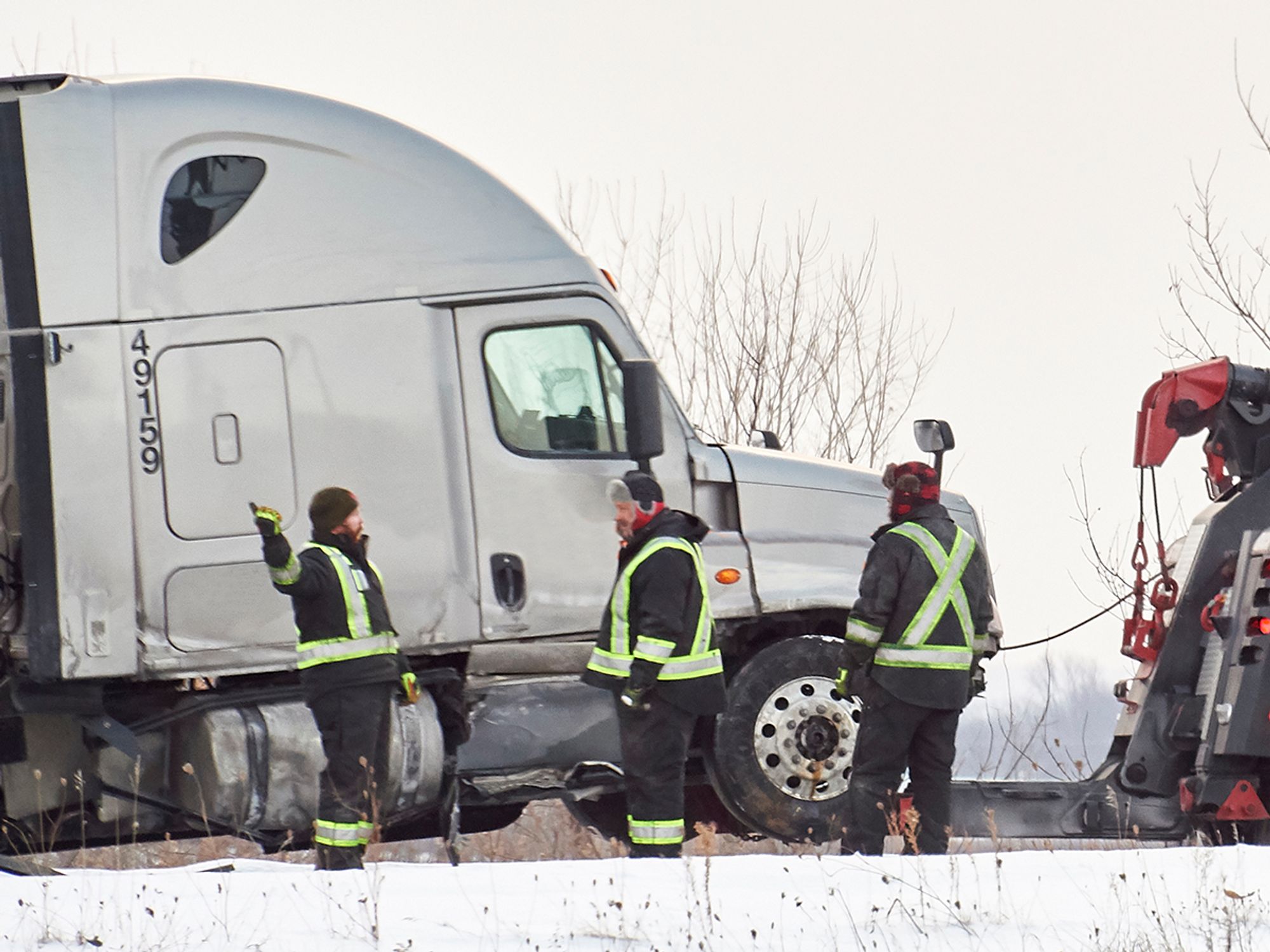At-the-scene

- Train drivers on how to behave, what to do, and what not do, immediately after a crash.
- Establish a cross-functional “Go-Team” to respond to major crashes to minimize the risk of litigation.
You just never know when it might happen to your driver. How drivers respond at the accident scene may determine if the situation goes from bad to worse.
The first step is to be prepared for a major accident.
In the case of a major accident you have all of the normal accident considerations and decisions, such as:
- Finding out what happened,
- Finding out if the driver was hurt,
- Figuring out what I can (or what I must) do for my driver,
- Finding out if anyone else was harmed,
- Determining the level of property damage,
- Developing an idea of what the situation is on the scene,
- Determining the condition of the cargo and notifying the customer (if necessary),
- Deciding if the truck is drivable, and
- Initiating an in-house accident investigation or reporting the accident to the insurance company so they can begin investigating it.
Initial response to a crash
Because of the consequences involved in mishandling a major accident, you will have two additional decisions to make.
- First, do you need to form a “go-team” to get out to the crash site?
- When do you need to notify your attorney?
Go-teams can be made up of company safety and management personnel, legal counsel employees, third party adjusters or administrators (TPAs), insurance company representatives, equipment and cargo recovery specialists, and clerical personnel.
The exact composition of the company go-team would depend on the capabilities of the company personnel, the needs of the scene, the time that has elapsed since the accident, distance the people are from the scene, and the availability and capabilities of TPA or insurance representatives near the scene. If you have not developed a go-team call list, you are going to have problems developing one in the middle of the night.
The go-teams job will be to support the driver, correctly collect and document information, get evidence preserved, liaison with emergency services (including law enforcement), and oversee equipment and cargo recovery. If the accident involved serious injuries or fatalities, plan on bringing your legal counsel onboard as soon as possible. Some carriers that use go-teams include the company attorney in the goteam (for notification and consultation purposes).
At-the-scene driver training
Even though technically not part of your “go team,” your driver will be your initial representative at the scene. However, most drivers do not have experience at dealing with major accidents (and that is a good thing). This is why driver training is a critical step in getting ready to properly handle the aftermath of a major accident.
It’s normal for a person experiencing an accident to be shook up. However, what is done right away can protect the driver and your company from future possible liability.
Encourage your drivers to learn the following ten points:
- Get a hold of their emotions.
- Secure the vehicle.
- Turn on the emergency flashers.
- Call the police on a cell phone if someone hasn’t already done so.
- Check on the occupants of the other vehicle.
- Put warning devices out within the first ten minutes.
- Contact the company and follow their instructions.
- Be cooperative with the police and if necessary, wait for a lawyer or fleet representative to arrive.
- If there is a dash-cam or video event recorder on the truck, to preserve the accident footage, stop the recording loop if the device is not capable of automatically doing so. Contact dispatch immediately if enforcement wants the Secure Digital (SD) card.
- Document the accident on a company-provided camera or the driver’s personal phone.
The driver should be prepared to surrender the personal cell phone to a company lawyer or other designated representative, to preserve evidence as to the status of the phone at the time of the accident.
Driver behavior
With emotions running high, your drivers may be tempted to do one of two things.
- They may imply fault by inadvertently apologizing, or
- Get defensive if verbally attacked by other parties involved in the accident.
Both are inappropriate responses, no matter the amount of stress that the driver is under.
Drivers should think before they speak. Anything said can and may be used against them in a civil lawsuit. Drivers need to protect themselves and their company’s interest but must be cooperative, professional, and polite to avoid problems later.
Train your drivers to protect the scene (place out warning devices), get help on the way, and provide assistance to the best of their ability.
Not getting witness information is a common error committed by drivers. This can be caused by the “officers will get it” assumption or the actions of the officers on scene. Officers chase everyone away except the vehicles/drivers directly involved in the accident. Also, some witnesses give up and leave without giving a statement to anyone.
Train your drivers to ask a question or two of witnesses, not carry on a conversation with them, and complete (or have the witness complete) a witness card. These should be provided as part of an “accident kit” that the driver is familiar with.
